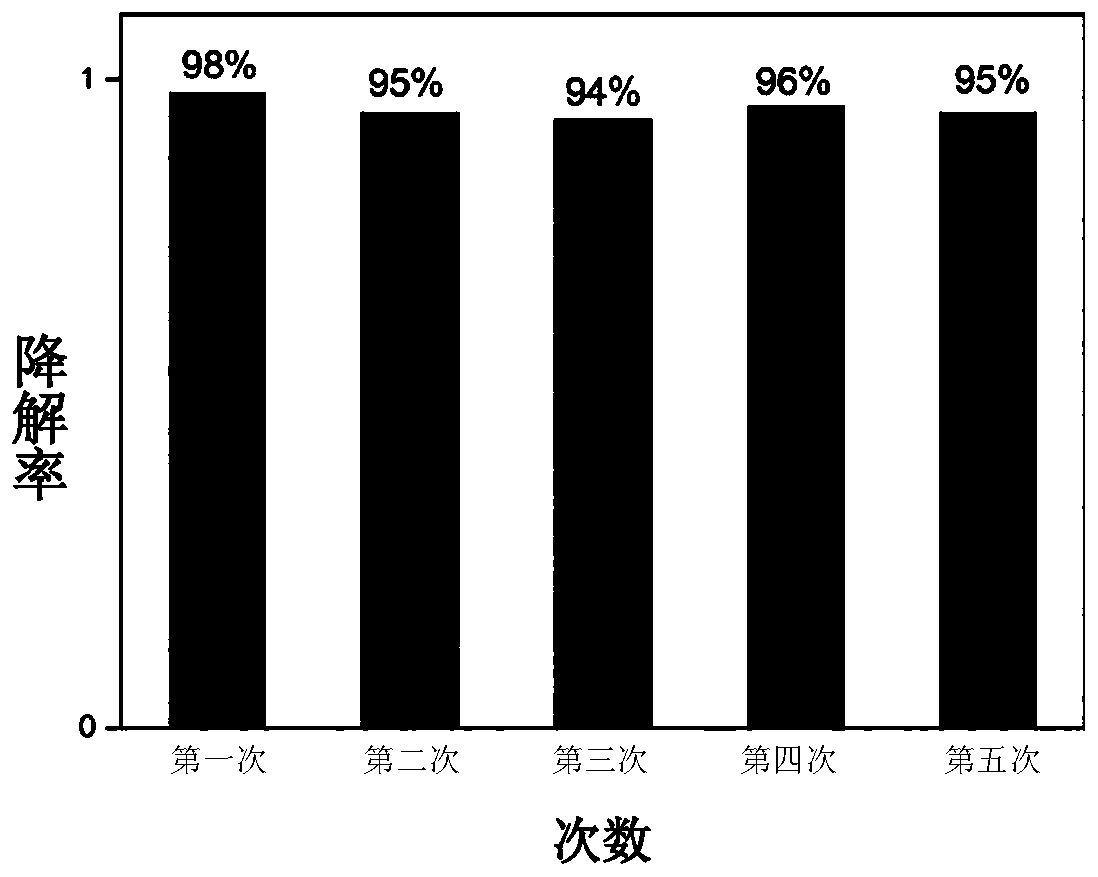Method for treatment of black and odorous water by photocatalysis technology
A black and odorous water, photocatalytic technology, applied in chemical instruments and methods, light water/sewage treatment, water pollutants, etc., can solve the problems of rising water temperature, unfavorable commercial application, insufficient hydrodynamic conditions, etc.
- Summary
- Abstract
- Description
- Claims
- Application Information
AI Technical Summary
Problems solved by technology
Method used
Image
Examples
Embodiment 1
[0047] A method for treating black and odorous water bodies with photocatalytic technology, the method is carried out sequentially by photocatalytic external source control treatment, photocatalytic internal source treatment and photocatalytic water body maintenance; the method uses photocatalytic materials to treat black and odorous water bodies in situ , the photocatalytic material adopts photocatalytic powder and a carrier attached with photocatalytic powder, the carrier adopts mesh material, porous foam substrate and fiber filler, and the photocatalytic powder adopts fractal structure titanium oxide, surface modified titanium oxide and activated carbon-reduced mesoporous titanium oxide.
[0048] The preparation method of the carrier attached with photocatalytic powder is to disperse 5 parts by weight of photocatalytic powder in 500 parts by weight of water, ultrasonically disperse for 30 minutes and stir for 1.5 hours, then add 5 parts by weight of dispersion liquid, stir e...
Embodiment 2
[0063] The difference between this embodiment and embodiment 1 is:
[0064] The step (A2) also includes applying a voltage of 500V to the water body while illuminating.
[0065] The photocatalytic endogenous treatment includes step (B1): distributing the carrier with photocatalytic powder attached to the surface of the sewage 0.5m downward, and treating it under light conditions for 5d.
[0066] The step (B1) further includes: putting photocatalytic powder into the sewage before or during the light irradiation, and the amount of photocatalytic powder put in is 0.1g of photocatalytic powder per square meter of sewage.
[0067] The step (C1) further includes: before or during the illumination, distributing the carrier with the photocatalytic powder attached to the surface of the water body 0.5m downward.
[0068] The mesh material is a polyethylene mesh; the mesh number of the mesh material is 10 mesh.
[0069] The porous foam substrate is aluminum foam.
[0070] The fiber fi...
Embodiment 3
[0073] The difference between this embodiment and embodiment 1 is:
[0074] The photocatalytic endogenous treatment includes step (B1): distributing the carrier with photocatalytic powder attached to the surface of the sewage 1m downward, and treating it under light conditions for 30d.
[0075] The step (A2) further includes applying a voltage of 1000V to the water body while illuminating.
[0076] The step (B1) further includes: putting photocatalytic powder into the sewage before or during the light irradiation, and the dosage of the photocatalytic powder is 100 g of photocatalytic powder per square meter of sewage.
[0077] The step (C1) further includes: before or during the illumination, distributing the carrier with the photocatalytic powder attached to the surface of the water body 1m downward.
[0078] The mesh material is nylon mesh, polyethylene mesh, polypropylene mesh, polyvinyl chloride mesh, aluminum mesh, iron mesh, copper mesh, nickel mesh, stainless steel mes...
PUM
 Login to View More
Login to View More Abstract
Description
Claims
Application Information
 Login to View More
Login to View More - R&D
- Intellectual Property
- Life Sciences
- Materials
- Tech Scout
- Unparalleled Data Quality
- Higher Quality Content
- 60% Fewer Hallucinations
Browse by: Latest US Patents, China's latest patents, Technical Efficacy Thesaurus, Application Domain, Technology Topic, Popular Technical Reports.
© 2025 PatSnap. All rights reserved.Legal|Privacy policy|Modern Slavery Act Transparency Statement|Sitemap|About US| Contact US: help@patsnap.com

